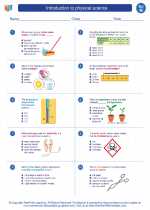Biome
A biome is a large geographical area of distinctive plant and animal groups, which are adapted to that particular environment. Biomes are often defined by factors such as climate, vegetation, and geography. There are several major types of biomes, each with its own unique characteristics and species.
Types of Biomes
- Desert: Dry areas with little rainfall, characterized by sparse vegetation and extreme temperature variations. Examples include the Sahara Desert and the Mojave Desert.
- Grassland: Areas dominated by grasses and herbaceous plants, with few trees. Grasslands can be found in regions such as the African savanna and the American prairie.
- Forest: Forest biomes can be further divided into several subtypes, including tropical rainforests, temperate forests, and boreal forests. These biomes are characterized by their unique tree species and diverse wildlife.
- Tundra: Cold and treeless landscapes with short growing seasons. Tundra biomes are found in the Arctic and Antarctic regions, as well as high mountain ranges.
- Aquatic: Biomes that include freshwater (e.g., rivers, lakes) and marine (e.g., oceans, coral reefs) environments. Aquatic biomes are home to a wide variety of aquatic plants and animals.
Factors Influencing Biomes
Several factors influence the characteristics of a biome:
- Climate: Temperature, precipitation, and humidity levels play a significant role in determining the type of biome that develops in a particular area.
- Soil Type: The composition and fertility of the soil influence the types of plants that can grow in a biome.
- Geography: Factors such as altitude, slope, and proximity to water bodies can affect the development of biomes.
- Human Impact: Human activities, such as deforestation and urbanization, can alter and disrupt natural biomes.
Study Guide
When studying biomes, it's important to familiarize yourself with the characteristics, plant and animal species, and ecological processes associated with each type of biome. Consider the following study tips:
- Learn to identify key features of each biome, such as climate patterns, dominant vegetation, and typical animal species.
- Understand the adaptations that plants and animals have developed to thrive in their respective biomes.
- Compare and contrast different biomes to understand their unique attributes and ecological significance.
- Explore the impact of human activities on various biomes and the efforts being made to conserve and restore these ecosystems.
By mastering the concepts and details of biomes, you'll gain a deeper understanding of the Earth's diverse ecosystems and the interconnectedness of life within them.





